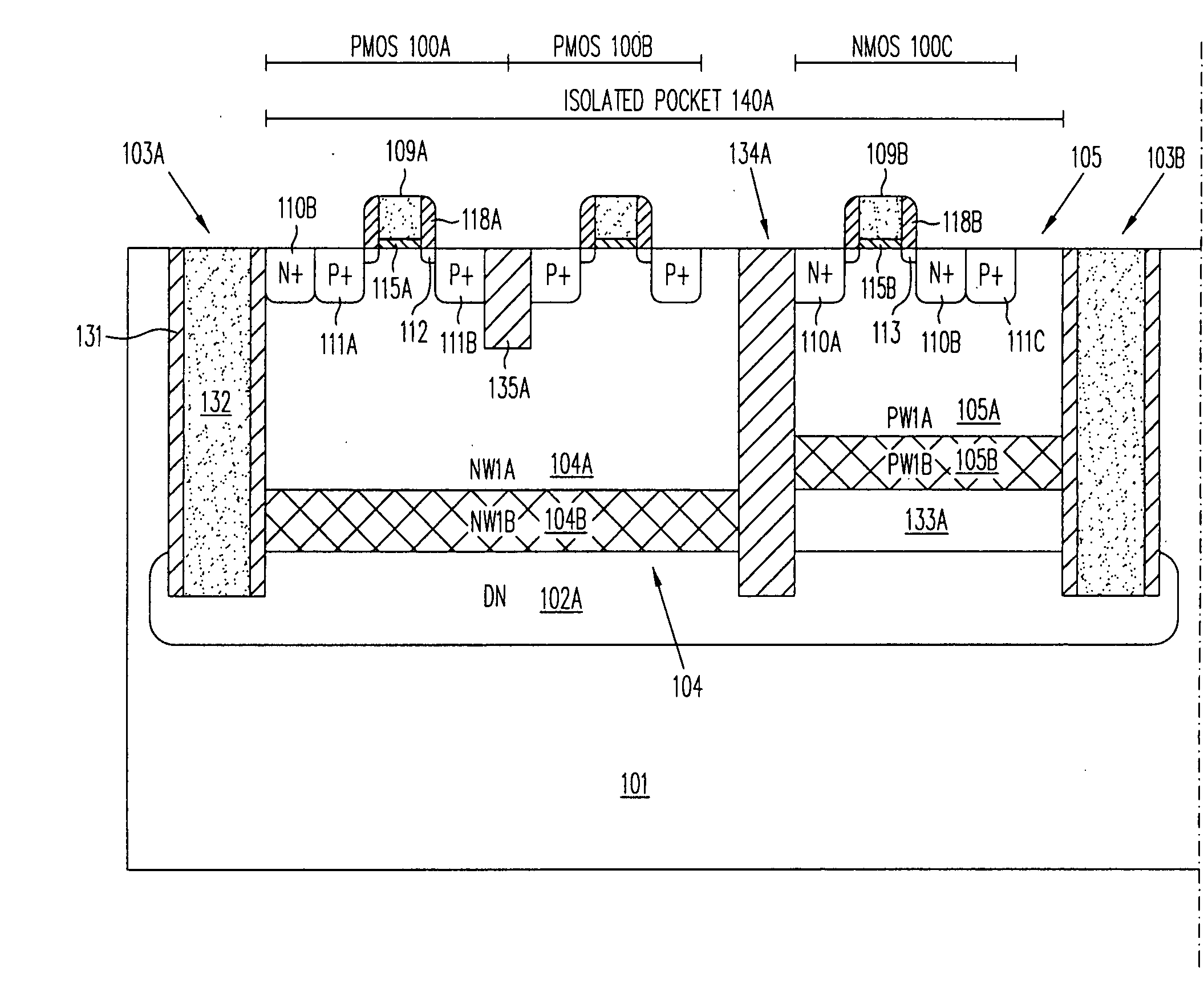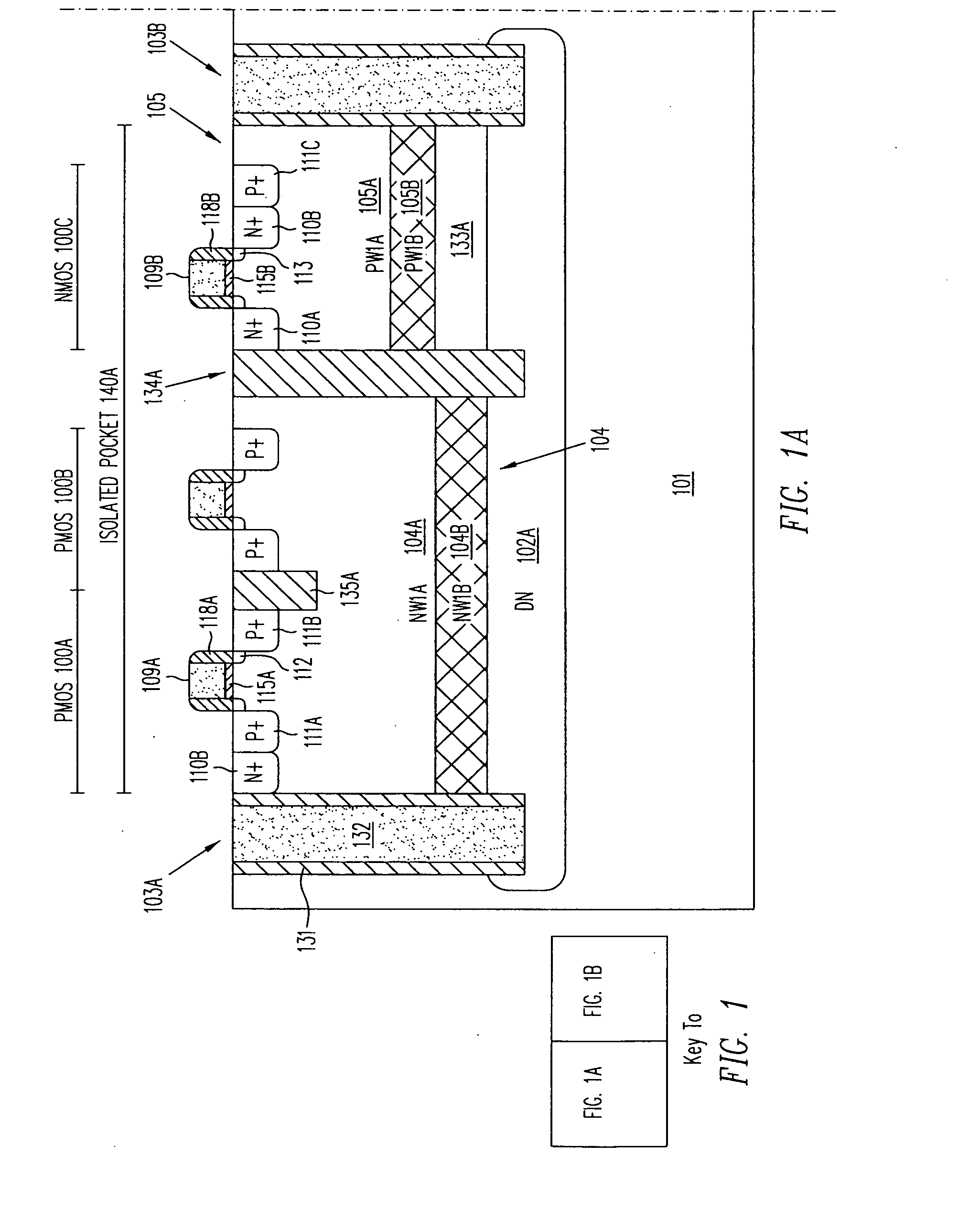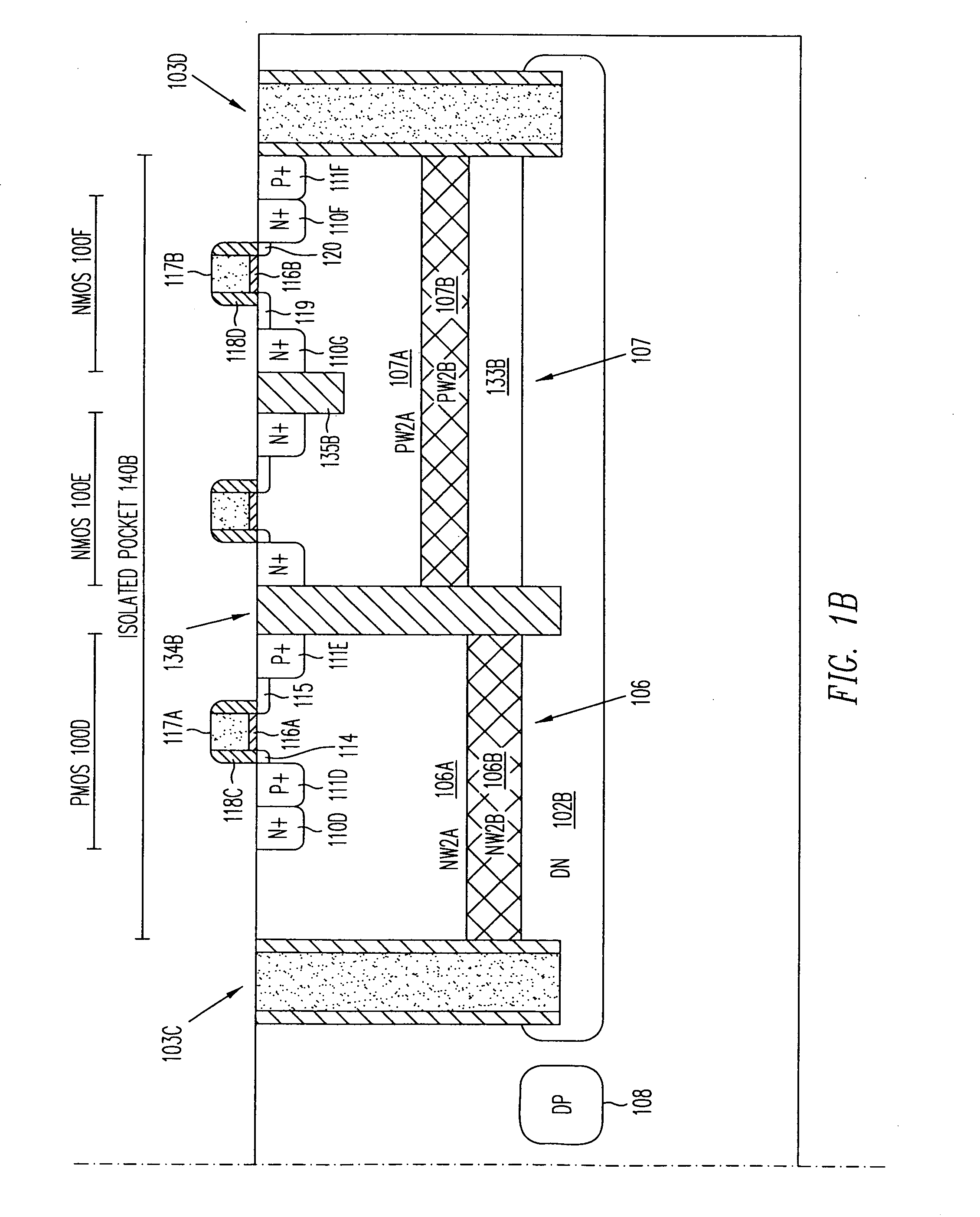Isolated Bipolar Transistor
a bipolar transistor and transistor technology, applied in the direction of basic electric elements, semiconductor devices, electrical equipment, etc., can solve the problems of not facilitating complete electrical isolation, unable to facilitate the electrical isolation of its fabricated devices, and unable to facilitate competitive electrical isolation
- Summary
- Abstract
- Description
- Claims
- Application Information
AI Technical Summary
Benefits of technology
Problems solved by technology
Method used
Image
Examples
Embodiment Construction
[0041]Initially, various isolated CMOS and bipolar transistors that can be fabricated in accordance with this invention will be described. This will be followed by a description of alternative process flows for fabricating the isolation structures.
[0042]FIG. 1 illustrates a cross-sectional view of isolated CMOS devices fabricated in a common P-type substrate 101. A PMOS 100A, a PMOS 100B, and an NMOS 100C are formed in a pocket 140A, which is isolated from substrate 101 by a deep implanted DN floor isolation region 102A and filled trenches 103A and 103B. The sidewalls of trenches 103A and 103B are covered with a layer 131 of dielectric material and the interior parts of the trenches are filled with a conductive material 132. The conductive material provides contact from the surface to the DN region 102A, and the dielectric material 131 insulates the conductive material 132 from the substrate 101 and from isolated pocket 140A. Trenches 103A and 103B are preferably portions of a singl...
PUM
 Login to View More
Login to View More Abstract
Description
Claims
Application Information
 Login to View More
Login to View More - R&D
- Intellectual Property
- Life Sciences
- Materials
- Tech Scout
- Unparalleled Data Quality
- Higher Quality Content
- 60% Fewer Hallucinations
Browse by: Latest US Patents, China's latest patents, Technical Efficacy Thesaurus, Application Domain, Technology Topic, Popular Technical Reports.
© 2025 PatSnap. All rights reserved.Legal|Privacy policy|Modern Slavery Act Transparency Statement|Sitemap|About US| Contact US: help@patsnap.com



